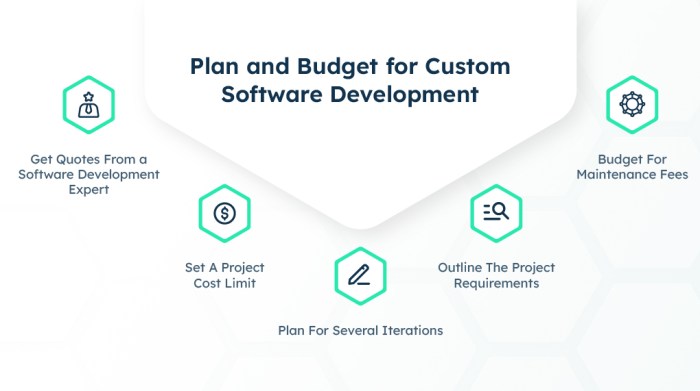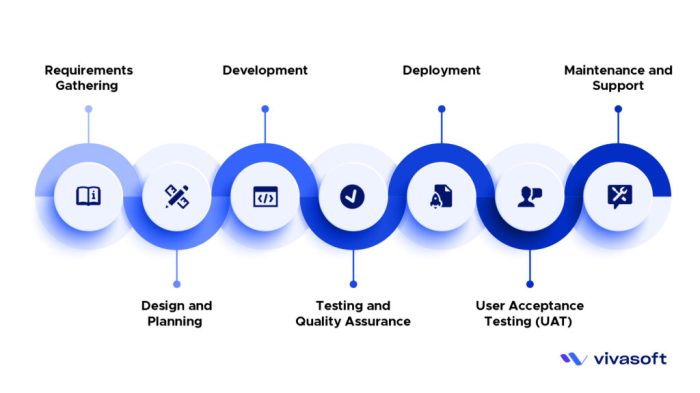In today’s rapidly evolving digital landscape, businesses of all sizes recognize the critical role custom software plays in achieving a competitive edge. However, the process of developing bespoke software can be complex, demanding significant resources and expertise. Nearshore custom software development offers a compelling solution, balancing cost-effectiveness with proximity and cultural understanding. This comprehensive guide delves into the intricacies of nearshore development, exploring its benefits, challenges, and considerations for businesses seeking to leverage this approach.
What is Nearshore Custom Software Development?
Nearshore software development refers to outsourcing software development projects to companies located in geographically proximate regions. Unlike offshore development, which involves outsourcing to countries across continents (e.g., India, China), nearshore outsourcing focuses on countries within the same time zone or a similar time zone, often sharing similar cultural values and business practices. This geographical proximity significantly reduces communication barriers, simplifies project management, and facilitates faster turnaround times.
Advantages of Nearshore Software Development
- Reduced Time Zones Differences: Facilitates real-time communication and collaboration, minimizing delays and misunderstandings.
- Cultural Proximity: Promotes better understanding and smoother collaboration due to shared cultural values and business etiquette.
- Cost-Effectiveness: Offers lower labor costs compared to onshore development, without the significant cost reductions often associated with extremely distant offshore locations.
- Improved Communication: Easier and more frequent communication leads to better project management and quicker problem resolution.
- Easier Travel and On-Site Visits: Physical visits to the development team are more feasible and cost-effective.
- Stronger Intellectual Property Protection: Geographical proximity can offer better control and protection over intellectual property compared to distant offshore locations.
- Better Quality Control: Closer proximity enables more effective monitoring and quality control throughout the development lifecycle.
Choosing the Right Nearshore Location
Selecting the appropriate nearshore location is crucial for successful project execution. Key factors to consider include:
Factors to Consider When Selecting a Nearshore Location:, Nearshore custom software development
- Technical Expertise: Assess the availability of skilled developers with expertise in your specific technology stack (e.g., .NET, Java, Python, React).
- Language and Cultural Compatibility: Consider language barriers and cultural differences that might impact communication and collaboration.
- Time Zone Alignment: Optimize communication and collaboration by choosing a location with minimal time zone differences.
- Cost of Development: Compare labor costs and overall development expenses across different nearshore locations.
- Legal and Regulatory Framework: Understand the legal and regulatory environment governing software development and intellectual property protection.
- Infrastructure and Technology: Evaluate the availability of reliable internet connectivity and supporting infrastructure.
- Political and Economic Stability: Assess the political and economic stability of the chosen location to mitigate potential risks.
Popular Nearshore Locations
Several regions have emerged as popular nearshore destinations, each offering unique advantages:
- Latin America (Mexico, Costa Rica, Colombia): Offers a blend of cost-effectiveness, skilled developers, and relatively close proximity to North America.
- Eastern Europe (Poland, Ukraine, Romania): Known for its strong technical talent pool and relatively low development costs.
- Canada: A close proximity option for US companies, offering high-quality development and a similar cultural environment.
Nearshore vs. Offshore vs. Onshore Development: Nearshore Custom Software Development
Understanding the differences between nearshore, offshore, and onshore development is essential for making informed decisions:
| Aspect | Nearshore | Offshore | Onshore |
|---|---|---|---|
| Location | Geographically proximate | Distant geographical location | Same country/region |
| Cost | Moderate | Low | High |
| Communication | Excellent | Challenging | Excellent |
| Time Zone Difference | Minimal | Significant | None |
| Cultural Differences | Minimal | Potentially significant | Minimal |
Challenges of Nearshore Software Development
While nearshore development offers numerous benefits, it’s crucial to acknowledge potential challenges:
- Language Barriers: Even with geographical proximity, language differences can still arise.
- Cultural Differences: Subtle cultural nuances can sometimes impact communication and collaboration.
- Legal and Regulatory Differences: Understanding and complying with different legal and regulatory frameworks can be complex.
- Finding and Vetting Developers: Thorough due diligence is essential to ensure the chosen development team possesses the necessary skills and experience.
- Managing Remote Teams: Effective project management strategies are critical for successful remote collaboration.
Tips for Successful Nearshore Software Development
- Clearly Defined Requirements: Develop comprehensive and unambiguous project requirements to avoid misunderstandings.
- Strong Communication Plan: Establish clear communication channels and protocols to facilitate seamless collaboration.
- Regular Progress Monitoring: Implement regular progress reviews and feedback sessions to track project milestones.
- Cultural Sensitivity Training: Consider cultural sensitivity training for team members to foster better understanding and collaboration.
- Robust Contract and Legal Agreements: Ensure a well-defined contract that protects your interests and intellectual property.
Frequently Asked Questions (FAQ)
- Q: What are the benefits of nearshore software development over offshore development?
A: Nearshore development offers improved communication, reduced time zone differences, cultural proximity, and easier travel and on-site visits, leading to better project management and quicker problem resolution. It also often offers stronger intellectual property protection. - Q: How do I choose the right nearshore software development partner?
A: Consider factors such as technical expertise, language compatibility, time zone alignment, cost, legal framework, infrastructure, and political stability. Thorough due diligence and vetting of potential partners are crucial. - Q: What are the potential risks associated with nearshore software development?
A: Potential risks include language barriers, cultural differences, legal and regulatory complexities, challenges in finding and vetting developers, and managing remote teams effectively. - Q: How can I mitigate the risks of nearshore software development?
A: Clearly defined requirements, a strong communication plan, regular progress monitoring, cultural sensitivity training, and robust legal agreements are essential for mitigating risks. - Q: Is nearshore software development suitable for all businesses?
A: While nearshore development can be beneficial for many businesses, its suitability depends on factors such as project complexity, budget, and specific needs. Smaller projects with tighter deadlines may benefit more from nearshore than offshore.
Conclusion
Nearshore custom software development offers a compelling approach for businesses seeking to balance cost-effectiveness with proximity and cultural understanding. By carefully considering the factors discussed in this guide, businesses can leverage the benefits of nearshore development to build high-quality software solutions while mitigating potential challenges. The key is meticulous planning, clear communication, and a strategic selection of a development partner.

Source: taazaa.com
Call to Action
Ready to explore the potential of nearshore custom software development for your business? Contact us today for a free consultation and let’s discuss your project requirements.
FAQ Overview
What are the key benefits of nearshore development?

Source: techdee.com
Reduced time zone differences, improved communication, potentially lower costs than onshore development, access to specialized skills, and closer collaboration leading to faster development cycles.
What are some potential drawbacks of nearshore development?

Source: vivasoftltd.com
Potential cultural differences requiring careful management, the need for robust communication strategies, and potential legal and regulatory considerations depending on the chosen location.
How do I choose a suitable nearshore development partner?
Consider factors like experience, expertise in your specific technology stack, client testimonials, communication style, and the overall cultural fit.
What are the typical contract structures for nearshore development?
Common structures include fixed-price contracts, time and materials contracts, and dedicated team models. The best choice depends on the project’s scope and complexity.
